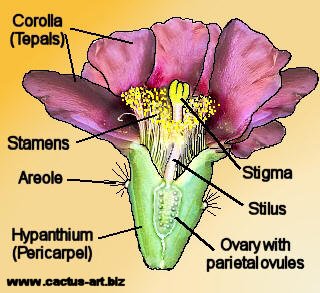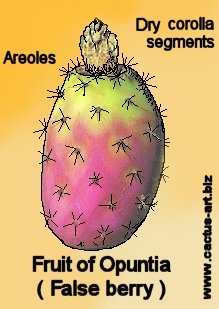|

 The
fruit of Cactaceae clearly shows
that the pericarpel is a fused combination of
shoot and the true botanical fruit,
the mature ovary. The
fruit of Cactaceae clearly shows
that the pericarpel is a fused combination of
shoot and the true botanical fruit,
the mature ovary.
(For example, when
we eat the fleshy fruits of
prickly-pears, we are eating primarily stem tissue (after removing
the glochids and
spines, of course). Because the
pericarpel is composed of stem tissue, it, like a regular
cladode, produces conic
leaves and
areoles in its sides that, in turn,
produce glochids and sometimes spines, or even
flower buds.
The pericarpel of some opuntias
fruits, (e.g. Cylindropuntia fulgida) can also produces
vegetative
propagules. Since the pericarpel
surrounding the ovary is actually modified stem tissue and has the
ability to generate new organs such
as adventitious
roots and
stems, the fruits can drop from the
parent plant and develop into
clonal individuals. |